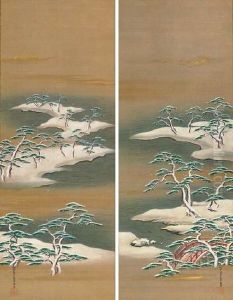Sumiyoshi Keishu Paintings
Sumiyoshi Keishu was a Japanese artist known for his contributions to the world of Ukiyo-e, a genre of Japanese woodblock prints and paintings. Born in 1866, Keishu became active during the Meiji period, a time when Japan was rapidly modernizing and opening up to Western influences. Despite the cultural shifts occurring during this period, Keishu remained dedicated to the traditional techniques and subjects of Ukiyo-e.
Keishu initially trained under the Ukiyo-e master Tsukioka Yoshitoshi, one of the last great figures of the genre. Under Yoshitoshi's guidance, Keishu honed his skills and developed his own style. He later became associated with the Shin Hanga movement, which sought to revitalize traditional Ukiyo-e art by incorporating Western styles and techniques. His works often featured bijinga (pictures of beautiful women), a popular Ukiyo-e theme, and he was known for his delicate and refined portrayals of female beauty.
Throughout his career, Keishu also worked as an illustrator for novels and magazines, including the literary magazine 'Bungei Kurabu.' His illustrations helped to popularize the magazine and contributed to the Meiji-era trend of integrating art with literature. Keishu's illustrations were distinguished by their clear lines and careful composition, which reflected the influence of his training in traditional Japanese art as well as the newer styles from the West.
Keishu's legacy is one of bridging the gap between the traditional and modern. He adapted to the changes of his time while maintaining the essence of the Ukiyo-e tradition. His works continue to be appreciated for their beauty and historical value, offering insights into the aesthetics and cultural dynamics of late 19th and early 20th century Japan. Sumiyoshi Keishu passed away in 1945, leaving behind a body of work that remains influential in the study of Japanese art history.
